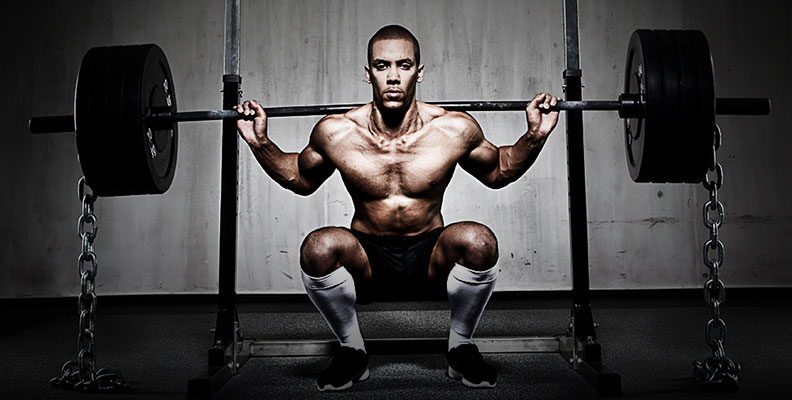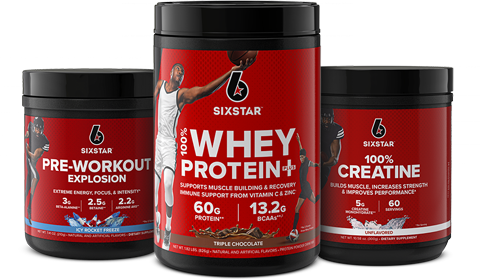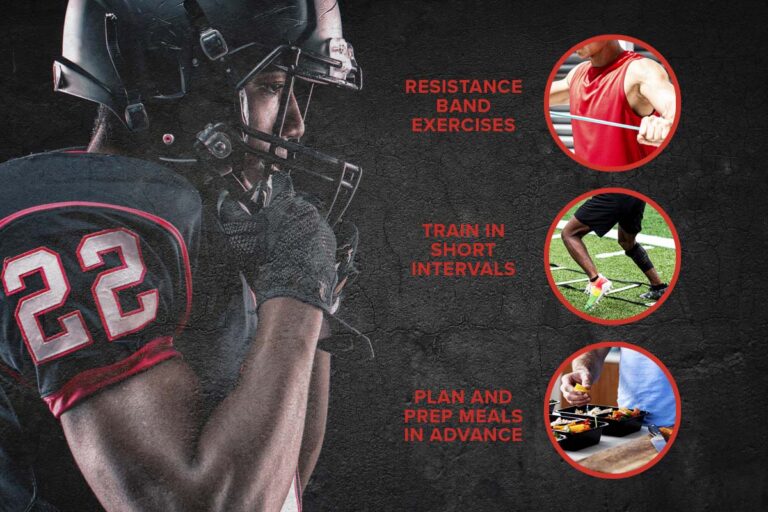Squatting is one of the most basic human movements, and doing it with a weighted barbell on your back is a tried-and-true method of getting big and strong. If you’re not squatting, you’re leaving money on the table, plain and simple. The basic barbell squat is one of the most important exercises you can do for overall body size and strength. It doesn’t just build your legs, it’s a whole body movement! If you’ve hit a plateau in your squat progression or want to make sure that your gains never stall, try these six tips to improve your squat strength today!
1. CORE STRENGTH
Your core is what holds it all together during a squat. If you’re not used to doing compound lifts where the entire body needs to work together and your core stabilizer muscles are lacking, a big squat will remain just a dream. Taking the extra time to work on your core will help your body to support a big squat and will keep your back safe. One great exercise to increase core strength for squatting is the plank.
To perform the plank, lie down on your stomach and then prop yourself up, supporting your weight on your toes and forearms. Make sure your elbows are directly below your shoulders and your forearms flat on the ground.
Keep your body straight at all times and hold this position for timed sets. Try for 30 seconds at first, then move your way up to 1-minute sets. To increase the difficulty, try raising one arm and/or leg at a time.
2. UPPER BACK STRENGTH
Your upper back and trap muscles are very important for holding the barbell in place on your back. Keeping a tight and stable platform for the bar is very important, especially when attempting to handle big weights. A great exercise to strengthen the upper back and trap muscles is the dumbbell row performed in a more elevated position as opposed to the usual position where your back is parallel with the ground.
To perform the dumbbell row with a focus on the upper back and traps, grab a dumbbell in one hand while using your other hand to lean against an elevated surface, like a rack of dumbbells, for example. Let your arm holding the dumbbell fully extend down to the floor, then pull the dumbbell towards your torso and let your elbow move back behind your body as you contract your back muscles. Your torso should remain at about a 45-degree angle with the ground at all times. Make sure to squeeze your back muscles at the top of the movement before returning the dumbbell back to the starting position. Perform 8 to 12 reps with each arm to complete one set.
3. PAUSE SQUATS
Pause squats are a great way to break through a training plateau! Performing this tempo squat variation will allow you to gain more strength in the bottom portion of the movement or “coming out of the hole.” Eliminating the elastic rebound effect of the bottom portion of this lift will force your body to use purely strength and no momentum to bring the weight back to the starting position. To perform this movement, simply perform a regular back squat; however, when you get to the bottom, hold the position for 3 to 5 seconds before squatting the weight back up.
4. PROPER FOOTWEAR
Proper footwear is very important for squatting and can make a real difference in your numbers. When people squat with very cushy soles, like those typically found in running shoes, the cushion absorbs some of the force you exert as you attempt to stand up with the barbell. The less force you are driving into the ground through your heels, the harder it is going to be to stand up with heavy weight on your back. Look for shoes that have a very thin rubber sole, such as those used in sports like wrestling, boxing and indoor soccer (without cleats). Another issue many people have is a lack of mobility in their ankles. This prevents them from squatting all the way down properly. You may want to invest in a pair of Olympic lifting shoes that have a raised heel, allowing you to squat deeper without putting as much pressure on your ankles if mobility is an issue for you.
5. HIGH FREQUENCY
If you want to get really good at something, you have to do it all the time. If you wanted to play an instrument well, you’d probably have to practice daily, and squatting is no different. OK, so maybe you can’t squat every day, but squatting once a week isn’t good enough either. If you really want a big squat, you need to make it a focus of your training and perform it 3 to 5 times per week. Doing this much squatting will demand a ton of your energy and you won’t be able to focus as much on other lifts. However, just give a high-frequency squatting cycle a shot for 3 to 4 months and watch your squat numbers as well as general size and strength go through the roof! Squatting with high frequency can be very taxing on the body, so you’ll have to make sure you are consuming a high amount of protein to recover properly and continuously make improvements. Adding a protein shake like Whey Protein Plus, a blend of whey protein and creatine, will help to make sure you are recovering quickly while making continuous gains in size and strength.
6. MIX IT UP
Another way to increase your squatting strength is to change up the way you squat. Squatting in different ways can help you to build up your strength by hitting different muscle groups harder than the conventional barbell back squat would. One example of an alternative squat method would be the goblet squat. This type of squat heavily engages the core muscles, which have to work hard to keep you from falling forward!
To perform this exercise you can use either a kettlebell or dumbbell. Grab the weight and hold it in front of your chest with your elbows at about a 45-degree angle. You should hold the dumbbell or kettlebell at chest level as if you were about to drink from a big medieval goblet. Squat down, letting the weight and your elbows pass between your knees. Once your thighs have gone down past parallel, keeping your chest up, stand back up with the weight. Keep your back straight the whole time – if your back is curving you may need to use a lighter weight.














